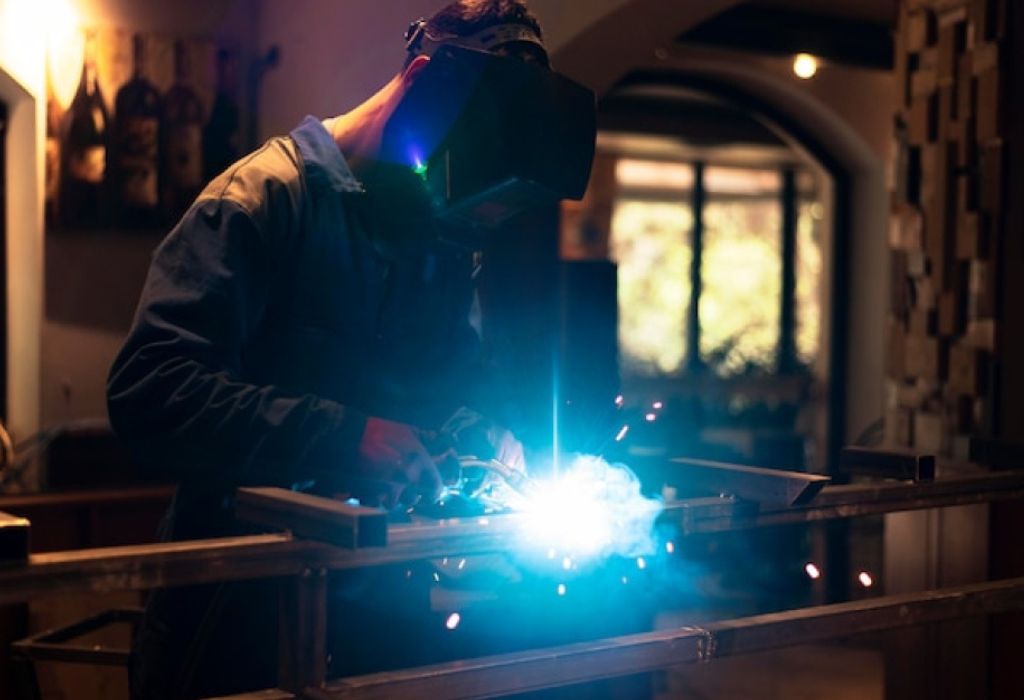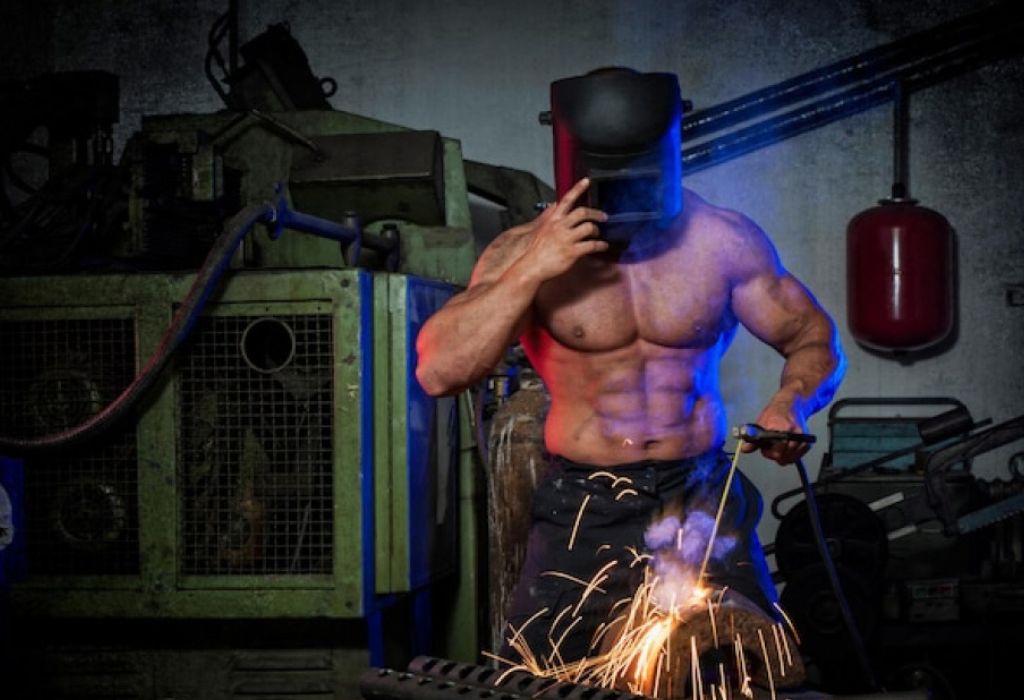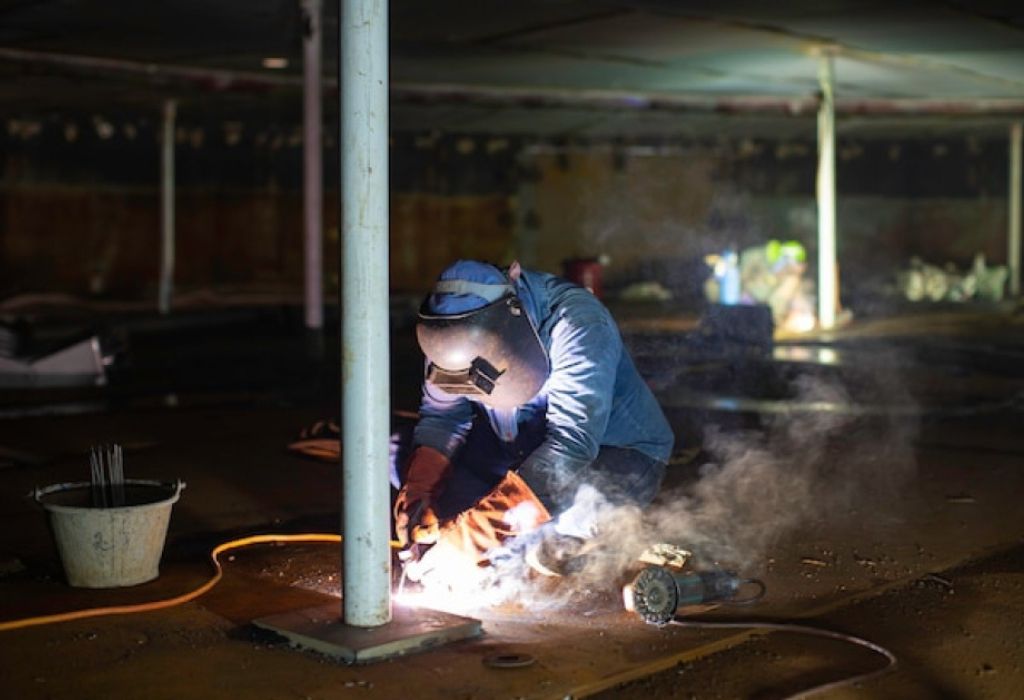The ocean floor is silent except for the hiss of air in a sealed chamber where welders work under crushing pressure.
Inside this hyperbaric environment, a single weld may determine whether an offshore structure holds firm or fails.
Curiosity often begins in a workshop where sparks fly across a steel plate.
The question grows: how to become a hyperbaric welder, and what path leads from surface welding to the high-risk world of pressurized habitats?
The challenge is not just technical skill. Hyperbaric welding demands mastery of commercial diving, medical clearance, safety protocols, and welding codes that govern every electrode and joint.
Industry data shows that commercial diver training requires at least 625 hours of structured instruction before certification (ADCI Standards).
This foundation is essential before a welder can even attempt underwater or pressurized work.
Welding itself is equally demanding. According to the American Welding Society AWS D3.6M standard, hyperbaric welding procedures must meet strict performance tests for both wet and dry environments (AWS).
These rules ensure safety, consistency, and quality in extreme conditions.
The risks are well-documented. Divers face hazards such as decompression sickness, electrical shock, and even explosions from trapped gases if safety measures are ignored. Training builds resilience not just in technical tasks, but in risk awareness.
This guide will map the journey from learning basic welding skills to securing the specialized certifications and dive experience needed for hyperbaric welding.
By the end, the path to one of the most challenging careers in the welding world will be clear.
What “Hyperbaric Welder” Really Means

The term hyperbaric welder describes professionals who weld in environments where pressure is higher than the surface, usually underwater or inside sealed habitats. This includes both wet welding directly in water and dry welding inside pressurized chambers.
In wet welding, the diver uses waterproof electrodes while exposed to currents, low visibility, and fluctuating temperatures. Dry hyperbaric welding, by contrast, is performed in a habitat that maintains a dry workspace but still matches the surrounding pressure.
Both methods are governed by AWS D3.6M standards, which define how welds are tested, inspected, and qualified. These standards ensure structural integrity on critical offshore projects.
Employers rarely hire surface welders who want to dive later. Instead, they recruit commercial divers who are trained and qualified in welding, as diving competence is the foundation of the job.
Hyperbaric welding is not an entry-level task. Divers typically spend years building experience in surface-supplied jobs before progressing to pressurized habitat or saturation welding assignments.
Questions and Answers
Is a hyperbaric welder the same as an underwater welder?
Yes, hyperbaric welding includes both wet and dry underwater welding.
What welding code applies to hyperbaric work?
The AWS D3.6M standard governs underwater welding procedures.
Do companies hire welders or divers first?
They hire commercial divers who can weld.
Is hyperbaric welding entry-level?
No, it requires years of experience.
What is the difference between wet and dry hyperbaric welding?
Wet welding occurs in water; dry welding is inside a pressurized habitat.
Snapshot: The 6-Step Path to Becoming a Hyperbaric Welder
Becoming a hyperbaric welder is a structured journey. Each step builds on the last, combining trade skills with diving competence.
Step 1: Complete basic education and pass a commercial diver medical exam.
Step 2: Gain strong topside welding certifications, including 6G pipe.
Step 3: Enroll in a certified commercial diving school with ADCI or IMCA standards.
Step 4: Start as a diver tender or entry-level commercial diver.
Step 5: Accumulate dive hours, practice wet welding, and qualify to AWS D3.6M standards.
Step 6: Progress into saturation or hyperbaric chamber work.
Questions and Answers
How long does it take?
Typically 2–5 years to reach hyperbaric welding roles.
What is the first qualification?
Topside welding certifications plus fitness clearance.
Who sets diving standards?
Organizations like ADCI, IMCA, and DCBC.
Can recreational SCUBA qualify you?
No, only commercial diving certifications are accepted.
Is it possible to skip welding and only dive?
Not for welding work — both skills are required.
Prerequisites: Fitness, Medicals, and Aptitude
A hyperbaric welder must meet strict prerequisites before training. Medical and psychological clearances are essential for safety.
Most programs require candidates to be at least 18, pass a swim test, and complete a commercial diver medical exam.
Physical fitness, lung health, and cardiovascular endurance are critical for handling pressure changes. Mental strength is equally important for confined space and isolation challenges.
Questions and Answers
What is the minimum age?
Generally 18 years old.
Do you need a dive medical?
Yes, certified by an approved physician.
Is claustrophobia a concern?
Yes, it can prevent safe chamber work.
Do vision and hearing matter?
Yes, both are essential for communication and safety.
Are background checks required?
Yes, many jobs require clean records and TWIC cards.
Building the Welding Foundation
Before diving, candidates must demonstrate advanced welding proficiency. Offshore employers expect welders to handle multiple processes.
Key certifications include SMAW, GMAW, FCAW, and particularly 6G pipe welding. Familiarity with welding codes and NDT practices adds credibility.
Employers prioritize divers who can weld in varied conditions, ensuring repairs meet safety standards.
Questions and Answers
Which process is most common in wet welding?
SMAW with waterproof electrodes.
Is 6G pipe certification necessary?
Yes, it is highly valued.
Do AWS certifications help?
Yes, they strengthen employability.
Is TIG important?
It’s useful for specialized alloys.
What else should welders learn?
Blueprint reading and procedure qualification records (PQR).
Commercial Diving School: Training and Certification

Commercial diving school is the formal entry point. Programs usually last 6–9 months and cover surface-supplied diving, pneumo, rigging, cutting, and wet welding modules.
Accredited schools follow ADCI, IMCA, or DCBC standards, ensuring international recognition. Completion includes practical hours, safety protocols, and AWS D3.6M procedures.
According to ADCI, 625 hours is the minimum requirement for commercial diver certification (ADCI).
Questions and Answers
How long is training?
Around 6–9 months, depending on school.
Is SCUBA used for work?
No, surface-supplied air is the standard.
Why choose IMCA-aligned schools?
They offer international mobility.
Do schools include welding practice?
Yes, often using AWS D3.6M modules.
What is the biggest requirement?
Meeting both dive hours and safety competency.
Understanding AWS D3.6M Standards
The AWS D3.6M:2017 standard defines underwater welding requirements. It covers wet and dry welds, essential variables, and qualification processes.
Employers test divers to this standard before assigning them to critical jobs. Passing requires consistency under pressure and adherence to procedures.
A new revision of the code is expected in 2025, updating variables and test requirements (AWS).
Questions and Answers
Why does AWS D3.6M matter?
It ensures weld quality and safety.
Are wet and dry procedures identical?
No, each has unique requirements.
Who qualifies welders?
Employers or approved agencies.
Do welders need to study the full code?
They must master procedure essentials.
Is re-certification required?
Yes, welders must remain current.
Safety and Risk Management
Hyperbaric welding carries unique risks. Divers face hazards including decompression sickness, electrical shock, gas explosions, and hypothermia.
Habitats require strict purging and gas monitoring to prevent accidents. Risk assessments, lockout-tagout, and decompression procedures are mandatory.
Reports highlight that divers face higher risks of injury and fatality compared to surface welders (Divers Alert Network).
Questions and Answers
Is it dangerous?
Yes, risks include DCS, explosions, and shock.
How are explosions prevented?
By purging habitats and controlling gases.
What is decompression sickness?
Nitrogen bubbles forming in the bloodstream.
What about electrical shock?
Waterproof systems reduce risk.
What protects welders most?
Strict adherence to procedures.
From Air Diving to Saturation
Hyperbaric welding often occurs in saturation diving. Divers live in pressurized chambers and work from diving bells.
Progression from air diving to saturation takes years of logged dives and proven competence.
Saturation divers earn higher pay but face long hitches away from home and greater physical stress.
Questions and Answers
When do divers reach saturation?
After several years of experience.
Is pay higher?
Yes, due to risk and complexity.
How long are hitches?
Often weeks at a time.
Does all hyperbaric welding require saturation?
No, shallow jobs use air diving habitats.
What is the biggest challenge?
Adapting to life under continuous pressure.
Career Costs, Pay, and Outlook

Becoming a hyperbaric welder requires investment. Commercial diving school can cost $15,000–$25,000, plus gear and medicals.
Entry-level divers may start as tenders, but hyperbaric welders earn six-figure salaries depending on location and project demand.
Job availability fluctuates with oil, gas, and offshore construction markets. Divers who also gain NDT and inspection skills remain in demand.
Questions and Answers
What does training cost?
$15,000–$25,000 on average.
What is the starting role?
Diver tender or assistant.
Do hyperbaric welders earn more?
Yes, often over $100,000 annually.
Is work steady year-round?
No, it depends on project cycles.
Can divers move to land jobs?
Yes, in welding inspection or ROV work.
Conclusion
The journey of how to become a hyperbaric welder is long but rewarding. It requires welding mastery, commercial diver certification, and years of practice under strict codes.
The combination of risk, skill, and responsibility makes this one of the most respected trades in the offshore industry. With commitment, training, and safety discipline, a welder can transform sparks in a shop into critical repairs deep beneath the sea.

I’m Darrell Julian, the founder, lead writer, and hands-on welding enthusiast behind ArcWeldingPro.com. With more than 15 years of real-world welding experience, I created this platform to share what I’ve learned in the field, in the shop, and in the heat of the arc.


